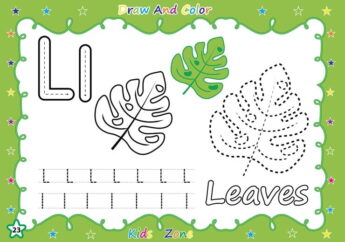7 Reasons To Have Amazing Images, Videos, And Other Visuals In Your Content
by Arnab Dey How to Guides 28 April 2023

People watch over two hours of video daily and share more than 100 million photos on Instagram daily.
In fact, more than 90% of the information transmitted to your brain is visual. That’s why you need to incorporate high-quality images, videos, and other types of visuals into your content strategy if you want to impact your audience.
Seven Prime Reasons To Have Stunning Images, Videos, And Other Visuals In Your Content
1. Enhances Engagement

You’ve heard it before, but visuals are easier to process than text. They’re also more memorable, not just because of their aesthetic appeal. Visuals help you understand things better, which means they can also be more persuasive.
These appealing images, videos, and other visuals motivate viewers to engage with them, increasing engagement metrics, including likes, shares, comments, mentions, and clicks.
For example, if you want someone to buy something from your store or sign up for a mailing list, show them a video of the used product. It’s much more effective than just describing what it does in words alone.
It is due to this very reason that Instagram has become so popular. The social media platform focuses more on visuals than text. Statista says the average engagement rate on Instagram posts is 1.74%, which is increasing.
2. Faster to Consume
As a content creator, one of your main goals is to ensure your audience can easily consume what you’re putting out there. In fact, this is so important that it’s often the first question you ask when deciding whether or not to share something, “Is this easy to read?”
The more easily consumers consume your content, the more likely they will read it. And if they read it, which means spending time-consuming the words on their screens, they’re much more likely to remember what they’ve read.
3. Generate More Organic Visibility

You can use visuals to generate more organic visibility and engagement in your content. Visuals are likelier to be shared, clicked on, and read than plain text.
For example, the average click-through rate for a Facebook post with an image attached is 2x higher than one without an image attached. In fact, according to HubSpot’s research on social media shows that posts with images receive 2.3x more comments than those without images.
Visuals can also help with SEO by adding keywords as alt-texts to images or embedding them in a video. Alt-texts play a vital role in SEO, and when you add keywords to alt-texts, your content can rank higher in Google Search Engine Result Pages (SERPs). However, you need the expertise to search and select the right keywords. This is where an SEO specialist comes in.
An SEO specialist can conduct website and keyword audits to find the best keywords for ranking your website on SERPs. You can look for an experienced SEO expert online by looking at the person’s or company’s experience.
You will find this information on his or her website. For example, Peter Rota is an SEO specialist who has mentioned that he has provided 100+ consultations with companies like Hub, Analog Devices, Alabaster, BuySellAds, etc.
As mentioned on the website, Peter Rota offers various services, such as eCommerce SEO, technical SEO, speed optimization and web development, and website and keywords audit. You will need keywords audit services to find the right keywords to add to your images and videos. This will help you find high-ranking keywords.
4. Promotes Better Understanding
Visuals are more memorable than text. The human brain is wired to process visuals more quickly than text, so your audience will likely remember the images you use in your content.
Visuals can help people understand complex concepts. If you’re trying to explain a difficult concept or idea, using visuals can make it easier for people who may not be familiar with the topic.
Visuals are easier than written explanations of similar information or ideas for most people. As already discussed, your brain process images faster than words on a page.
This means that if you want someone else’s brain processing power working for you instead of against you when presenting information about your business or brand online, adding visual elements like photos and videos into your content strategy is one way of doing just that.
5. Increases Retention

If you have much information to convey and want your audience to retain it, you should include visual elements in your content. Visuals help you remember what you see 60 times better than if you only read about it. Add some pictures if you’re trying to get an idea across or explain something complicated, like how a new product works.
But this does not mean you can just create any image or video and add it to your content. Since this approach is very useful, it is also a competitive space. Just YouTube shorts generate 30 billion hits per day. So there is so much content that one may not retain anything after setting aside the phone unless you have extraordinary content.
6. Boosts Shareability
If you want to share your content, you need to make it visual. Images are more likely to be shared than text; the more visual your content is, the higher its shareability will be.
Visuals also help with SEO; Google has preferred sites with images over those without them since 2014. This means having images on your site will give it an advantage in search results over competitors without visuals or text-based content.
Additionally, suppose there’s something relevant in an image, like if someone posts a photo of food they’re eating or a product they like using. In that case, it can encourage others on social media platforms like Twitter or Instagram to click through to their profile page.
7. Conveys Emotion

Emotion is a powerful driver of behavior. When you feel something, it’s hard not to act on it. People respond to emotion in ways they don’t always understand or recognize, and visuals can convey emotion better than words.
Emotions are universal; everyone feels them and responds accordingly. They’re also complex and nuanced, which makes them hard to describe in words alone. But images can capture these emotions much more accurately than words ever could.
The colors, textures, shapes, and other elements used in photography create an emotional response from viewers and communicate specific feelings or ideas. This is done through composition and lighting choices made by photographers who know how important these factors are when trying to evoke certain reactions from their audience.
Conclusion
The bottom line is that visuals can help make your content more engaging, faster to consume, and better understood. They also promote trust and authority with viewers because they convey emotion. The more emotion you can convey in your messaging, the better chance it has of being shared with others who will also engage with it.
Read Also:







































































































